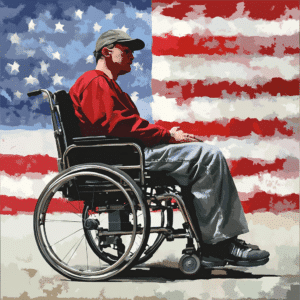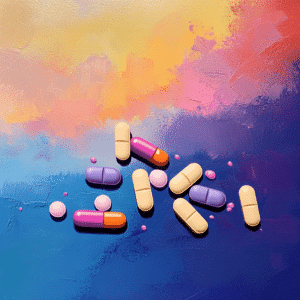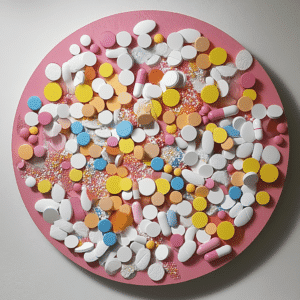Addiction is an unwelcome guest that can creep into families, stealing joy and leaving chaos in its wake. Drug court programs have emerged as a beacon of hope for many, providing unique pathways that prioritize recovery over punishment. Originating in the 1980s, these programs were created to tackle the rising tide of addiction, offering a different approach to those who found themselves trapped in a cycle of substance use disorders and legal issues. Over the years, they have evolved significantly, demonstrating the power of holistic support and community involvement.
Understanding the roots of drug court programs gives us insight into their importance. In light of the crack cocaine epidemic, the first drug courts sprang up as innovative responses to overwhelming addiction-related crime. This new judicial model aimed to connect individuals to treatment rather than incarceration. Notable milestones, such as the establishment of the Drug Court Program in Miami-Dade County in 1989, have showcased the effectiveness of this approach, paving the way for numerous successful programs across the nation.
As we delve into the specifics, it’s vital to recognize how these programs are not just about reducing recidivism; they are about restoring families and lives. Success stories abound from individuals who have reclaimed their futures through drug court programs. Some participants have even regained custody of their children, making heartwarming progress worth sharing. Programs are carefully curated to address the unique needs of each participant, fostering an environment where recovery is prioritized, and families can heal together.
Top 5 Drug Court Programs Making a Difference in 2024
Here’s a closer look at five remarkable drug court programs actively transforming lives in 2024:
Mechanisms of Change: How Drug Court Programs Operate
Understanding how drug court programs work is critical to appreciating their effectiveness. They operate through a collaborative framework involving judges, probation officers, treatment providers, and community organizations. This multi-faceted approach ensures that participants receive the necessary support while being held accountable.
Typically, participants undergo several phases, including assessment, treatment, progress monitoring, and aftercare support. Each phase plays a vital role in ensuring participants stay on track. During the assessment phase, individuals are evaluated to create tailored treatment plans. Once in treatment, regular progress check-ins keep participants engaged. Aftercare support is crucial for long-term success, helping prevent relapse and connect participants to community resources.
These layers of support emphasize that recovery isn’t a solo journey. It’s about fostering a community where individuals can lean on each other and thrive. Participants frequently express gratitude for the supportive network that drug courts provide, demonstrating how integral collaboration is to successful outcomes.
| **Aspect** | **Details** |
|---|---|
| Definition | Specialized court programs aimed at helping individuals with alcohol or drug dependency issues. |
| Target Population | Criminal defendants, offenders, juvenile offenders, and parents involved in child welfare cases. |
| Eligibility Criteria (Texas) | – Non-violent offense – First-time offender – Participation in therapy – Attendance at drug recovery meetings – Successful completion of urinalysis – Consistent court appearance |
| Types of Offenses | Generally non-violent, including possession, drug paraphernalia, and certain theft crimes connected to addiction. |
| Program Components | – Regular court appearances – Structured treatment plans – Mandatory participation in recovery programs – Monitoring through urinalysis – Supportive services |
| Duration | Programs typically last 12 to 24 months but can vary based on individual progress and court guidelines. |
| Benefits | – Reduces recidivism – Promotes rehabilitation over punishment – Provides access to treatment services – Involves community support systems – Offers a pathway to retain custody of children for parents involved in child welfare cases |
| Challenges | – Misallocation of resources – Exclusion of medication-assisted treatment – Insufficient focus on racial and ethnic disparities – Overreliance on jail sanctions for compliance failures |
| Success Rates | Varies by program; effective drug courts often report significant reductions in substance use and criminal behavior among participants. |
| Key Considerations | It is essential to assess each program’s adherence to best practices, focusing on treatment over punishment and addressing disparities in access and outcomes. |
The Science Behind Drug Court Programs: Evidence of Effectiveness
When it comes to the effectiveness of drug court programs, research substantiates their positive impact. Studies consistently reveal that participants in these programs enjoy better outcomes compared to those processed through traditional criminal justice systems. Notably, the National Association of Drug Court Professionals reports increased treatment completion rates and reduced re-offense rates.
Recent statistics highlight this efficacy, demonstrating that drug court programs also save communities money. By reducing incarceration costs and promoting community reintegration, they create a more sustainable model for addressing addiction. Drug courts redirect funds towards treatment rather than punishment, embodying a more compassionate, recovery-focused approach.
Parents facing the pain of addiction in their families can find solace in the conversation surrounding these programs. They offer hope that healing and reconnection with loved ones are possible, providing a pathway to recovery that minimizes legal entanglements and maximizes support.
Challenges Facing Drug Court Programs and Areas for Improvement
While the merits of drug court programs are evident, challenges persist. Some programs fall short, misidentifying participants or refusing medication-assisted treatments, which is essential for many in recovery. Concerns around racial and ethnic disparities also arise, revealing the need for programs to focus on inclusivity.
Moreover, some critics argue that drug court programs can inadvertently promote coercion over compassionate support, leading to questions about accountability versus empathy. Striking the right balance is crucial for ensuring that participants feel supported rather than penalized in their recovery journeys.
By identifying these challenges, advocacy groups like Mothers Against Addiction can better work toward solutions that prioritize the needs of individuals struggling with addiction. Engaging our communities in awareness initiatives, like proclaiming the importance of Crimial justice reform, empowers parents and family members to engage in the conversation regarding their loved ones’ recovery.
The Future of Drug Court Programs: Innovations on the Horizon
As we look ahead, the future of drug court programs appears promising. Integrating telehealth services and virtual support groups will revolutionize accessibility and engagement. This shift will help remove barriers for individuals seeking assistance, which is vital in a world increasingly reliant on technology.
Growing interest in expanding drug court models to include prevention initiatives is also an exciting development. Proactive measures targeting at-risk populations before they enter the criminal justice system hold the potential to change the narrative surrounding addiction. By investing in recovery resources earlier, society can create stronger foundations for enduring change.
Innovations in these programs keep the spirit of recovery alive. With continuous adaptations, there’s hope for a brighter, more supportive future for families grappling with addiction.
Innovative Wrap-Up: A Call to Support Drug Court Programs
As society grapples with the ongoing implications of addiction, the role of drug court programs becomes increasingly critical. They do more than merely serve as alternatives to incarceration; they reshape lives, reconnect families, and build healthier communities. By recognizing the effectiveness of these programs and advocating for increased resources through initiatives like recovery funding, we honor the journey of those in recovery while fostering a compassionate approach to addressing the addiction crisis.
Give parents hope as they navigate their children’s struggles. Empower them with supportive resources, including family leave For addiction treatment. The success stories emerging from drug court programs inspire action and remind us all that transformation is within reach.
Together, we can promote understanding, compassion, and effective change. Let’s ensure these programs not only survive but thrive in the years to come, actively engaging in avenues that lead individuals and families toward lasting recovery.
Drug Court Programs: Transforming Lives One Step at a Time
Understanding Drug Court Programs
Did you know that drug court programs aren’t just about punishing offenders? These innovative programs focus on rehabilitation, helping individuals break free from addiction and reintegrate into society. Instead of traditional penalties, participants receive support, counseling, and accountability, creating a holistic approach to recovery. Speaking of support, even characters like Zoe From Sesame street symbolize the importance of community in tackling life’s challenges.
Breaking Down the Impact
Statistics show drug court programs significantly reduce recidivism rates, meaning that participants who complete the program are less likely to re-offend. It’s a game-changer for families and communities, allowing people to rebuild their lives and find stability. Just like those forecasting the housing market Predictions, these programs aim to create pathways for success that lead to healthier, more productive lives. By addressing addiction as a public health issue rather than just a crime, drug courts can transform not just individuals but entire neighborhoods.
The Road to Recovery
Getting into a drug court program often involves meeting specific conditions laid out in a purchase agreement. Participants may be required to attend regular meetings, undergo drug testing, and participate in therapy sessions. This structured approach helps individuals stay accountable while embarking on their recovery journey. It’s similar to understanding the residual income definition, where continuous effort and support lead to lasting benefits. Just like aspiring professionals can learn How To become a loan officer, individuals in drug court programs are equipped with skills to navigate their futures successfully.
In summary, drug court programs aren’t just a second chance; they’re a lifeline for many facing the grips of addiction. By fostering support and accountability, these programs illuminate a path forward, offering hope and a transformative opportunity to reclaim lives.
What are the two general types of drug courts?
The two general types of drug courts are adult drug courts and juvenile drug courts, designed to address substance use issues among different age groups.
What are the three phases of a drug court?
Drug courts usually consist of three phases: the treatment phase, where participants engage in therapy and recovery programs; the compliance phase, where they demonstrate their commitment through regular check-ins and drug tests; and the graduation phase, celebrating successful completion of the program and reintegration into society.
How do you qualify for drug court in Texas?
To qualify for drug court in Texas, you typically need to have committed a non-violent offense, be a first-time offender, and agree to undergo treatment, attend recovery meetings, complete urinalysis, and consistently show up for court.
What are the disadvantages of drug courts?
Some disadvantages of drug courts include the potential mismatch of participants, restrictions on medication-assisted treatment, lack of attention to racial and ethnic disparities, and an overreliance on jail sanctions, which can undermine their effectiveness.
What are three primary goals of all drug courts?
The three primary goals of all drug courts are to reduce drug use and criminal behavior, provide access to treatment and recovery support, and improve public safety through rehabilitation.
What are the two types of possession in relation to drug offenses?
In relation to drug offenses, there are two types of possession: actual possession, where a person has direct control over the substance, and constructive possession, where they have the ability to access the drug even if it’s not on their person.
What is a Stage 3 drug trial?
A Stage 3 drug trial refers to the phase of clinical trials where the effectiveness and safety of a new drug are tested on a larger scale, often involving hundreds or thousands of participants.
How many states have drug courts?
As of now, there are drug courts in all 50 states across the U.S., showcasing a widespread approach to handling drug-related offenses.
Why do we need drug courts?
Drug courts are essential because they aim to break the cycle of addiction and incarceration, offering an alternative that can lead to recovery and a reduction in crime rates within the community.
Do first time drug offenders go to jail Texas?
First-time drug offenders in Texas might not always go to jail; instead, they could be eligible for treatment programs or diversion options, depending on the specifics of their case.
How do you beat drug charges in Texas?
To beat drug charges in Texas, it’s important to have a strong defense, which might include challenging the evidence, questioning police procedures, or showing that your rights were violated during the arrest.
What is the mandatory minimum sentence for drug possession in Texas?
The mandatory minimum sentence for drug possession in Texas can vary, but for certain drugs, it can start at 180 days in jail for less serious offenses, with more severe penalties for larger quantities or serious drugs.
How effective are drug courts in the US?
Drug courts have been shown to be effective in the U.S., significantly improving recovery rates and reducing recidivism among participants compared to traditional incarceration methods.
Do drug courts reduce the use of incarceration?
Yes, drug courts do help reduce the use of incarceration by offering treatment and rehabilitation options rather than automatically sending individuals to jail for drug offenses.
What is the difference between drug courts and other types of courts?
The key difference between drug courts and other types of courts is that drug courts focus on rehabilitation and treatment for substance use issues, while other courts may prioritize punishment and enforcement of laws.
What are the 2 types of court systems?
The two types of court systems in the U.S. are the federal court system, which handles federal cases, and the state court system, which addresses state law cases, including criminal, civil, and family matters.
What are the two general categories of drugs?
The two general categories of drugs are legal drugs, like prescription medications and over-the-counter products, and illegal drugs, which are prohibited by law due to their harmful effects.
What are two kinds of county courts quizlet?
Two kinds of county courts include county criminal courts, which handle misdemeanor crimes, and county civil courts, which deal with civil disputes and cases involving over certain dollar amounts.
What are the two categories where the Supreme Court can have original jurisdiction?
The two categories where the Supreme Court can have original jurisdiction are in cases involving ambassadors or public ministers and in cases where a state is a party, meaning disputes between states are dealt with directly by the Supreme Court.




























